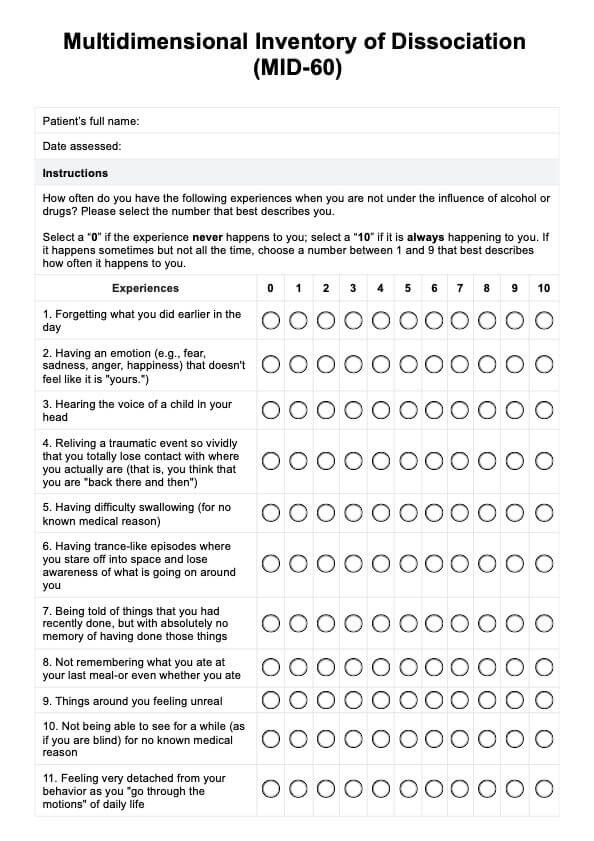It can be accomplished within 5 to 10 minutes.

Multidimensional Inventory of Dissociation (MID)
Use the Multidimensional Inventory of Dissociation to screen patients for potential dissociative disorders.
Use Template
Multidimensional Inventory of Dissociation (MID) Template
Commonly asked questions
It is a screening tool and should not be the sole assessment during the diagnostic process. It's best to use other tools to cover all bases before cross-checking everything with the latest edition of the DSM.
Common treatments include medication for accompanying issues like depression and anxiety. Psychotherapy should help address the traumatic/distressing experience that caused a patient to develop a dissociative disorder.
EHR and practice management software
Get started for free
*No credit card required
Free
$0/usd
Unlimited clients
Telehealth
1GB of storage
Client portal text
Automated billing and online payments











